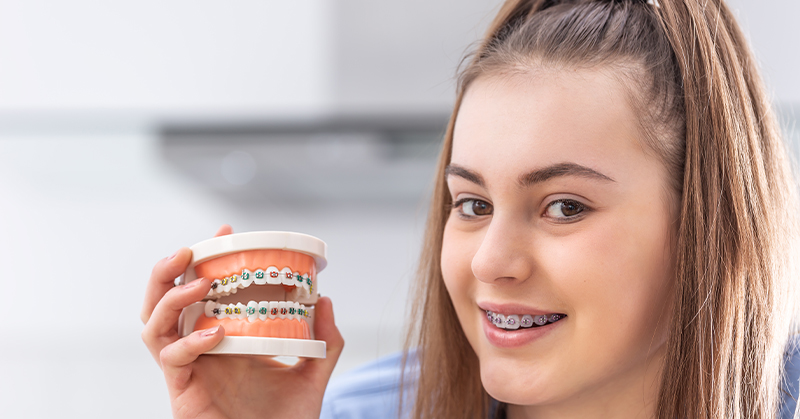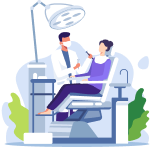How to get free dental implants?
When it comes to dental implants, the cost can sometimes make you clench your teeth harder than the cold does. But fear not! There are a plethora of avenues to explore for low-cost or even free dental care. From state and local resources to dental schools and community health centers, let’s dive into where you can find that much-needed dental implants without breaking the bank.Do I Have an Overbite or Underbite? How to Fix it?
updated on November 15, 2023
Do you struggle with not having the perfect smile? Do you feel self-conscious to fully smile or show your teeth? The cause behind issues with an imperfect smile often comes down to two common types of orthodontic problems: overbites and underbites. Both overbites and underbites can create functional issues with chewing and speaking, in addition to aesthetic concerns that make people feel insecure about their smile. In this article, we will explain what overbites and underbites are, the problems they can cause, and how orthodontic treatments like braces or aligners can help fix these conditions. With proper realignment of the teeth and jaws, you can achieve better function and finally have the smile you’ve always wanted.
What is an Overbite?
An overbite refers to when the upper front teeth excessively overlap the bottom front teeth vertically. Normally, there should be a slight overlap of the upper incisors over the lower of about 2-4mm. When this vertical overlap is 5mm or greater, it is considered an overbite or “deep bite.”
With an overbite, the upper front teeth completely cover much of the lower teeth when biting. This prevents proper contact between the top and bottom front teeth, giving the appearance of a “bulldog” bite.
There are two main types of overbites:
Dental Overbite: This occurs when the teeth themselves are misaligned, causing the upper teeth to extend too far forward. Contributing factors include crowded or missing teeth shifting others out of place, delayed permanent tooth eruption, or early loss of baby teeth.
Skeletal Overbite: This involves an actual skeletal jaw deformity where the upper jaw protrudes too far forward relative to the lower jaw. It is often genetic or caused by childhood habits like thumb-sucking impacting jaw development.
Overbites have several potential causes:
-
Dental factors like crooked, crowded, or missing teeth allowing malpositioning
-
Skeletal factors related to underdevelopment of the lower jaw
-
Harmful oral habits like thumb-sucking or tongue thrusting
-
Teeth grinding which wears down the lower teeth faster
-
Genetics such as inheriting jaw bone deformities
-
Injuries or conditions impacting jaw development
Proper diagnosis by an orthodontist is critical to determine the type and cause of an overbite.
Issues an Overbite Can Cause
Leaving an overbite untreated can lead to various health and aesthetic problems over time. One major concern is impaired mouth function, as a severe overbite inhibits proper chewing and swallowing. Speech can also become compromised. The misalignment strains jaw muscles leading to facial pain, headaches, TMJ disorders, and other discomfort. Excessive wear and tear on the teeth is another risk, since the overlapping front teeth constantly rub against each other and the opposing teeth. This accelerated tooth wear often causes gum recession and tooth decay.
Untreated overbites can also change facial appearance and profile, which can greatly impact self-confidence and quality of life. Breathing issues during sleep may arise as well. Seeking orthodontic treatment is critical to realign the teeth and jaw, which helps alleviate these potential problems. Correcting an overbite restores proper bite function and chewing ability while preventing long-term dental complications. It also improves facial aesthetics and self-esteem.
How to Fix an Overbite
Orthodontic treatment is usually required to correct an overbite and achieve proper alignment:
-
Braces can reposition the upper and lower front teeth into a proper bite relationship
-
Bite plates or specially shaped aligners may also be used
-
Occasionally, tooth extraction may be needed to allow room for alignment
-
Jaw surgery is an option for severe skeletal overbites to reposition the upper/lower jaw
With orthodontic treatment, the extent of the overbite can be reduced into a normal range. This improves bite function, chewing ability, and appearance.
-
What is an Underbite?
An underbite is the opposite of an overbite - the lower front teeth are positioned further forward than the upper front teeth. This causes the lower teeth to extend out beyond the upper when biting. An underbite gives a “bulldog” facial profile.
Underbites are often skeletal, meaning the lower jaw developed longer than the upper jaw. Underbites can also be dental, caused by tilted lower front teeth. Genetics commonly contribute to underbites. Other causes include thumbsucking, tongue thrusting, missing teeth, and developmental disorders.
Issues an Underbite Can Cause
Some problems associated with untreated underbites include:
-
Difficulty chewing and biting food efficiently
-
Jaw joint dysfunction and TMJ pain
-
Excessive lower tooth wear due to improper contact
-
Speech impediments
-
Psychological/self-esteem issues due to facial and smile esthetics
-
How to Fix an Underbite
As with overbites, orthodontic treatment is required to correct underbites:
-
Braces can reposition and straighten upper/lower teeth into proper alignment
-
Bite plates may be used to retrain bite position
-
Dental work like bonding or veneers can lengthen short upper teeth
-
Extraction of select teeth can allow alignment room
-
Jaw surgery is sometimes needed in severe skeletal underbite cases
Successful orthodontic correction of an underbite provides an improved facial profile, proper bite function for chewing, clearer speech, and boosted confidence in smile appearance.
-

free&low-cost dental clinics
View Now
dental health

Dental Implants

Dental Implants
Will Your Insurance Cover Dental Implants?
Dental implants are growing in popularity, with over 3 million Americans choosing them to replace missing teeth. While implants fuse securely into the jawbone providing natural-looking and long-lasting tooth replacements, the process does come with a hefty price tag. On average, a single implant can cost $1,600-$2,200 out of pocket. For patients needing multiple implants or other restorative work, these expenses quickly add up.
Dental Implants
Why Are Implants So Expensive?
According to recent statistics, tooth loss is a prevalent issue, especially among older individuals. Adults between the ages of 20 to 64 have an average of 25.5 remaining teeth. However, factors such as age, smoking, lower income, and education level can contribute to a higher likelihood of tooth loss. In this article, we will explore dental implants in detail through the following aspects:
Dental Implants
How to Find Dental Implants for Low Income
Dental implants are popular and effective solutions for replacing missing teeth. However, they can be quite expensive. For instance, one single implant can cost about $1500 in the US.If you're looking for ways to make dental implants more affordable, this article will provide you with five practical strategies to save on cost.
Dental Implants
How Can I Get Government Grants for Dental Implants?
Dental implants are a sought-after solution for missing teeth, offering a long-term fix that can significantly improve quality of life. However, the cost of dental implants can be prohibitive for many. Understanding government programs and other grants available for dental care, particularly dental implants, can help bridge this financial gap. In this guide, we will walk you through some government assistance and grant programs aimed at making dental implants more accessible.
Dental Implants
How to Get Your All-On-4 Dental Implants Without Breaking the Bank
In the United States, the cost of All-On-4 dental implants can vary significantly depending on your location. For instance, the cost in different states ranges from around $12,000 to $39,200 per arch. When seeking affordable options domestically, it's important to explore various clinics and compare their pricing. Additionally, some dental practices might offer flexible payment plans or dental loans to help manage the costs.







